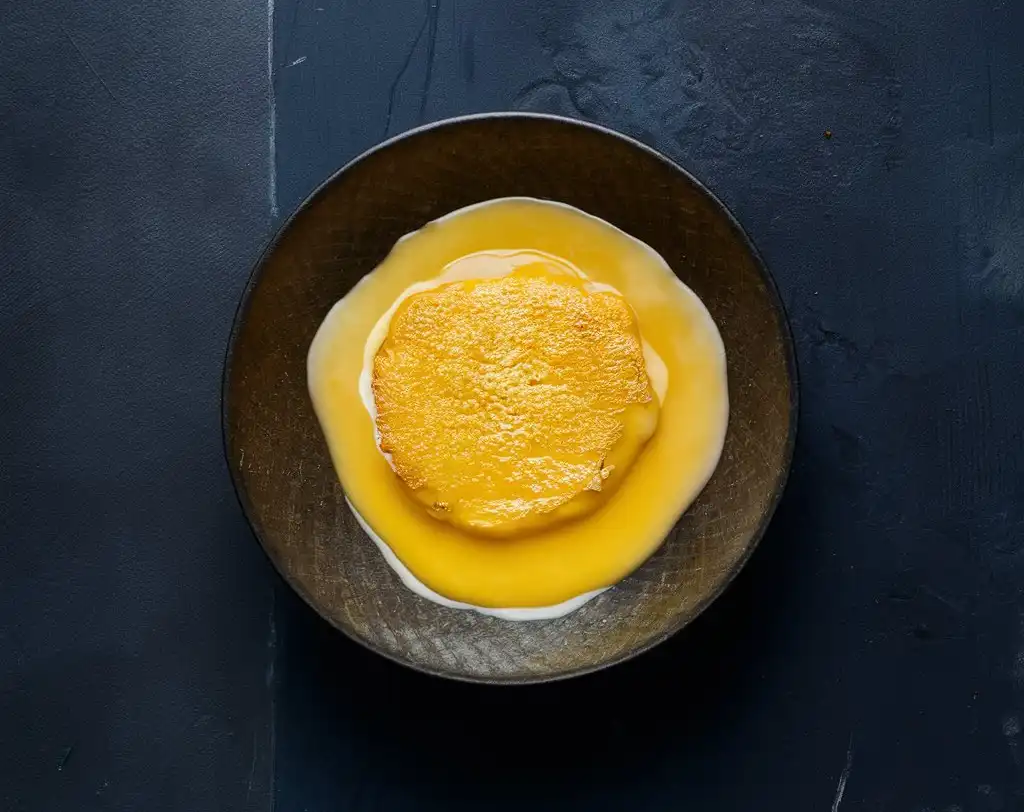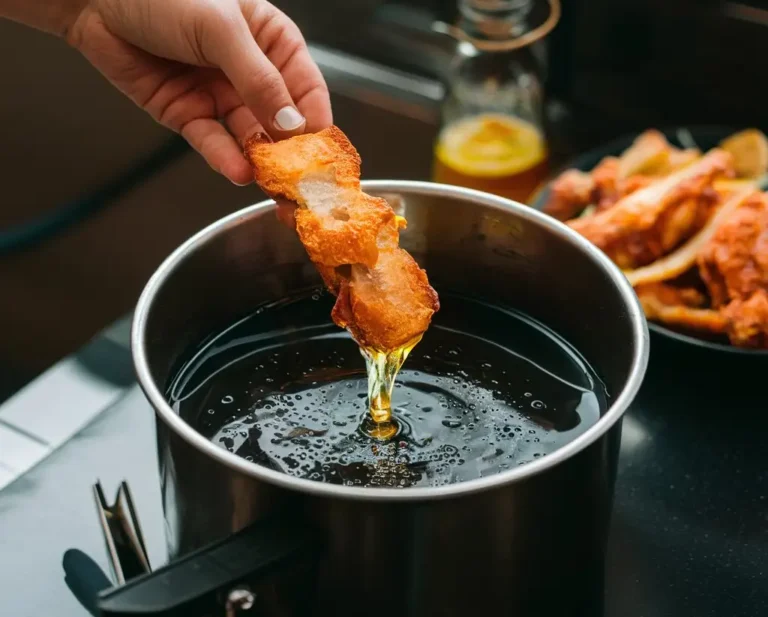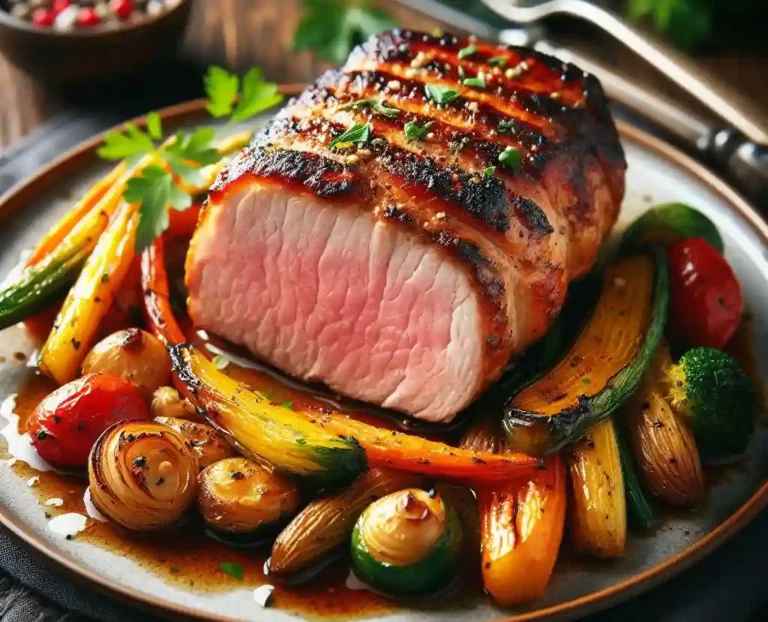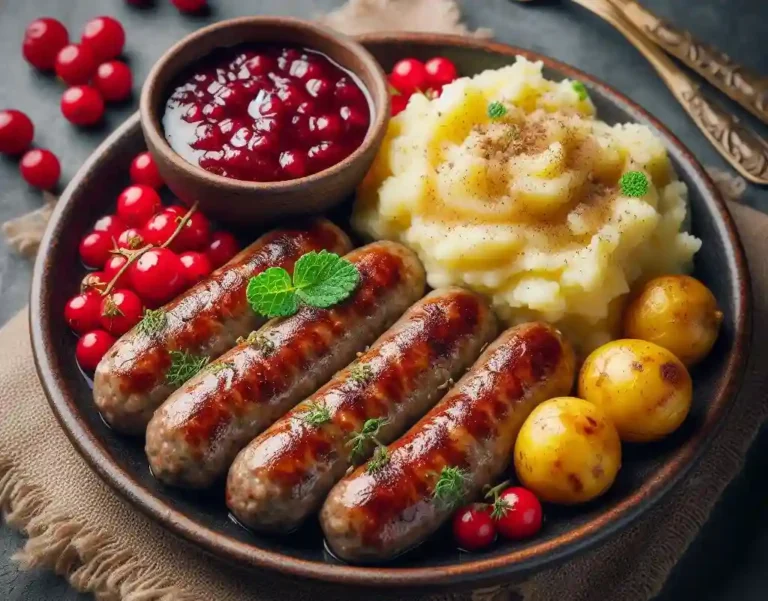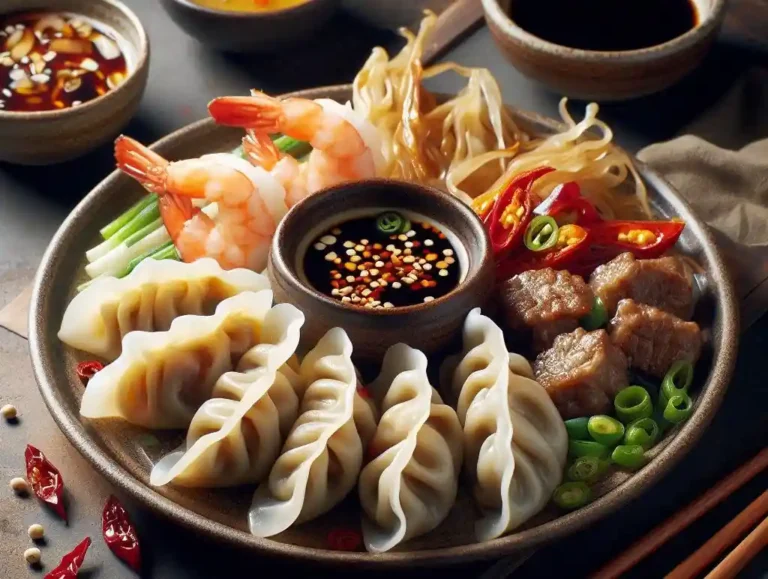How to Make an Egg Wash for Frying: Frying Fundamentals
When it comes to frying, a good egg wash can make all the difference between a crispy, golden-brown exterior and a dull, soggy mess.
An egg wash is a simple mixture of eggs, water, and sometimes other ingredients that helps to create a delicate, even crust on fried foods.
By making your own egg wash from scratch, you can customize the flavor and texture to suit your favorite fried dishes, from crispy fried chicken to delicate doughnuts.
How to Make an Egg Wash for Frying: A Quick Overview
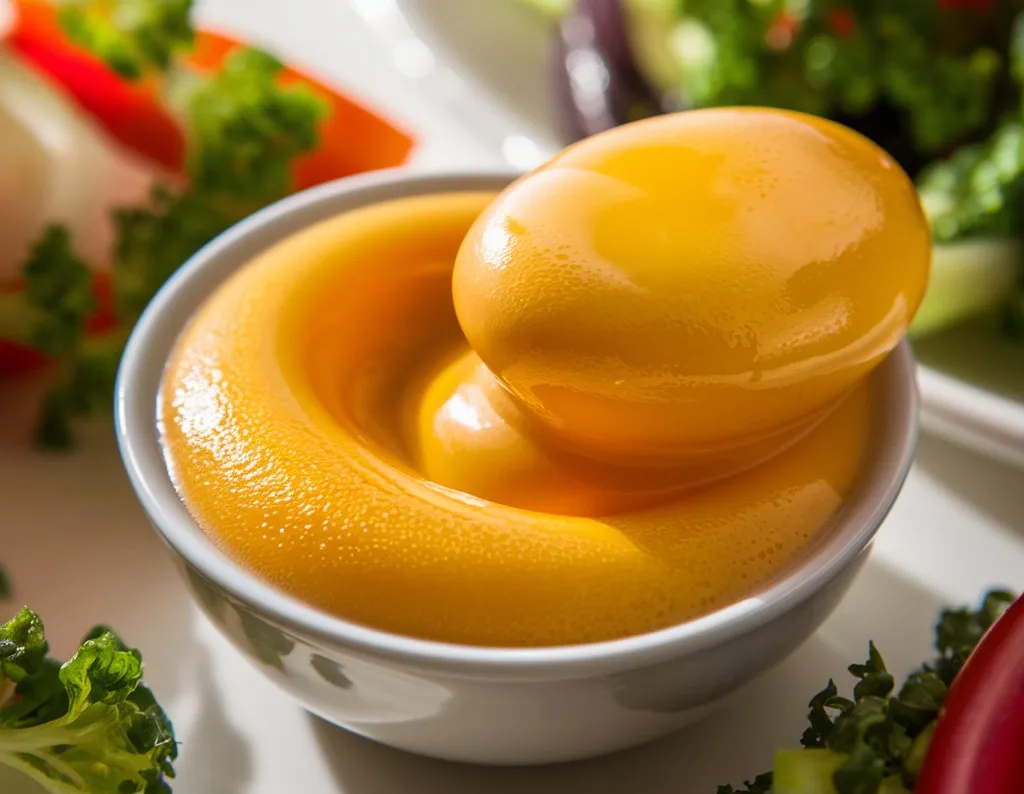
What is an Egg Wash?
- An egg wash is a mixture of eggs and liquid (such as water or milk) used to create a golden-brown coating on fried foods.
Why Use an Egg Wash?
- Enhances browning and crispiness of fried foods
- Adds flavor and richness
- Helps breading or coating adhere to food
Basic Egg Wash Recipe:
- 1 egg
- 1 tablespoon liquid (water, milk, or cream)
- Salt (optional)
Instructions:
- Beat the egg in a bowl until well-whisked
- Add the liquid and whisk until smooth
- Add salt to taste (if using)
- Mix well to combine
Tips and Variations:
- Use cold eggs for easier whisking
- Adjust liquid ratio to achieve desired consistency
- Add flavorings like garlic, herbs, or spices to the egg wash for extra flavor
- Experiment with different types of milk or cream for varying richness and flavor
Common Uses for Egg Wash:
- Fried chicken or fish
- Breaded and fried vegetables
- Fried pickles or onions
- Donuts or other sweet fried treats
What is an Egg Wash and Why Do You Need It for Frying?
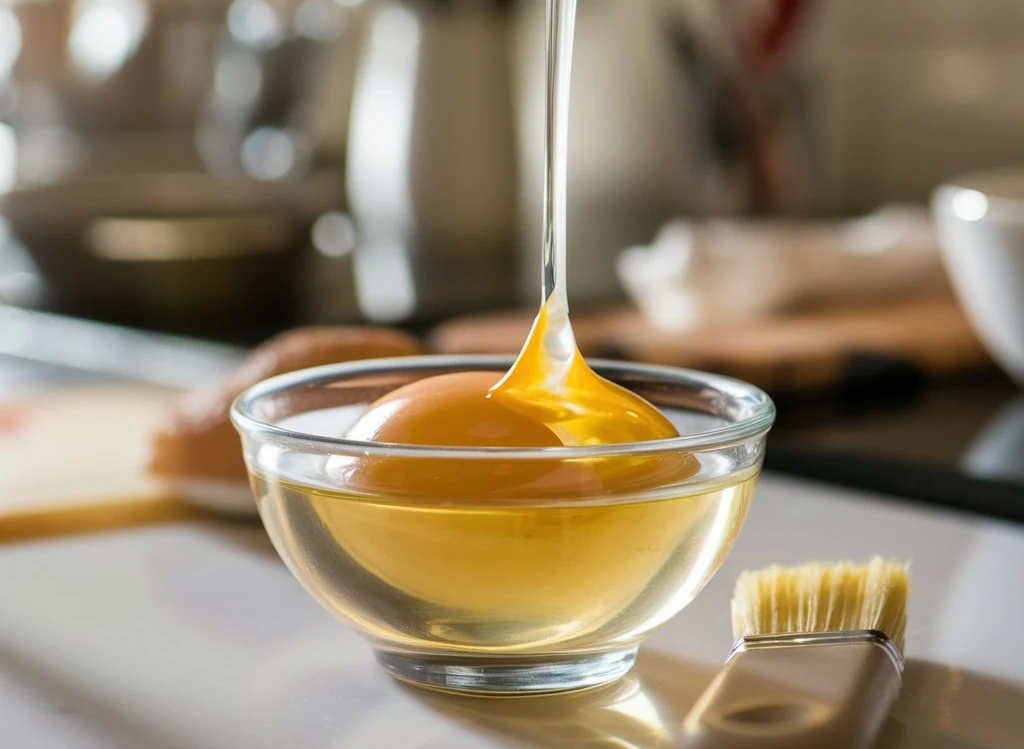
What is an Egg Wash?
- An egg wash is a mixture of eggs and a liquid (such as water, milk, or cream) used to create a golden-brown coating on fried foods.
- The egg wash serves as a binding agent, helping breading or coating adhere to the food, and enhancing the overall texture and appearance of the final product.
- The egg wash can be flavored with various seasonings, herbs, or spices to add extra flavor to the fried food.
Why Do You Need an Egg Wash for Frying?
- Browning and Crispiness: An egg wash helps create a golden-brown crust on fried foods, which is essential for texture and flavor. The egg proteins coagulate during frying, forming a crispy exterior that’s crunchy on the outside and tender on the inside.
- Adhesion: The egg wash acts as a glue, ensuring that the breading or coating adheres to the food evenly and consistently. This prevents the breading from falling off during frying, resulting in a more appealing and appetizing final product.
- Flavor Enhancement: An egg wash can be flavored with various ingredients, such as garlic, herbs, or spices, which are then infused into the fried food during the cooking process.
- Moisture Control: The egg wash helps regulate the amount of moisture in the fried food, preventing it from becoming too greasy or soggy.
- Texture: The egg wash can help create a delicate, tender crust on fried foods, which is especially important for delicate foods like fish or vegetables.
Benefits of Using an Egg Wash:
- Improved Appearance: An egg wash helps create a golden-brown color and a crispy texture, making fried foods more visually appealing.
- Enhanced Flavor: The egg wash can be flavored to add extra depth and complexity to the fried food.
- Increased Crispiness: The egg wash helps create a crunchy exterior that’s satisfying to eat.
- Better Breading Adhesion: The egg wash ensures that the breading or coating adheres evenly to the food, reducing waste and improving overall quality.
Common Uses for Egg Wash:
- Fried chicken or fish
- Breaded and fried vegetables
- Fried pickles or onions
- Donuts or other sweet fried treats
- Fried appetizers or snacks
The Simple Ingredients You Need to Make an Egg Wash
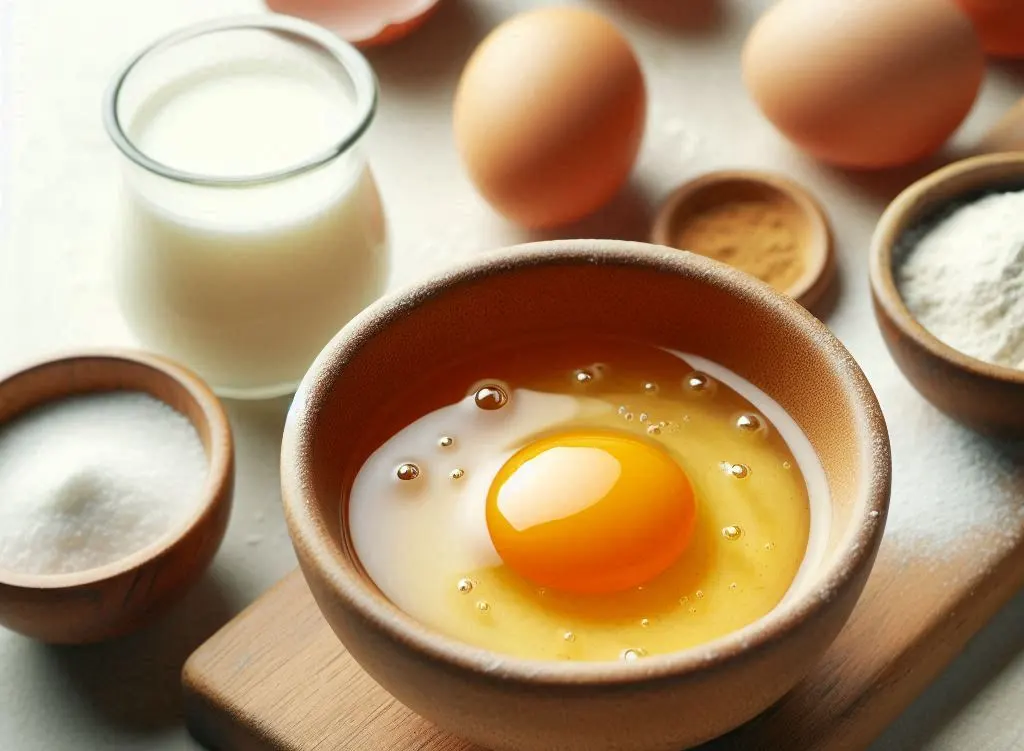
The Essential Ingredients:
- Eggs: This is the primary ingredient in an egg wash, and it’s essential for creating a rich, golden-brown color and a crispy texture. You can use either whole eggs or just the egg yolks, depending on the desired richness and flavor.
- Liquid: You’ll need a liquid to thin out the eggs and create a smooth, consistent mixture. Common liquids used in egg washes include:
- Water: A neutral-tasting liquid that won’t affect the flavor of your fried foods.
- Milk: Adds a touch of sweetness and tenderness to the egg wash.
- Cream: Enriches the egg wash with a rich, creamy flavor.
- Buttermilk: Adds a tangy, slightly sour flavor to the egg wash.
Optional Ingredients:
- Salt: Adds flavor and helps bring out the natural flavors of the food being fried. Use a pinch of salt to enhance the flavor of your egg wash.
- Flavorings: You can customize your egg wash with various flavorings, such as:
- Garlic: Mince a clove or two of garlic and mix it into the egg wash for an aromatic flavor.
- Herbs: Chopped fresh herbs like parsley, dill, or thyme add a bright, fresh flavor to the egg wash.
- Spices: Add a pinch of cayenne pepper, paprika, or smoked paprika to give your egg wash a spicy kick.
- Lemon juice or zest: Adds a burst of citrus flavor to the egg wash.
Tips for Choosing the Right Ingredients:
- Freshness matters: Use fresh eggs for the best flavor and texture.
- Choose the right liquid: Select a liquid that complements the flavor of the food being fried. For example, use milk or cream for sweet fried treats, and water or buttermilk for savory fried foods.
- Don’t overdo it: Use a light hand when adding flavorings, as they can quickly overpower the flavor of the food.
Common Ratios for Egg Wash:
- Basic ratio: 1 egg to 1 tablespoon of liquid (water, milk, or cream)
- Richer ratio: 1 egg yolk to 1 tablespoon of liquid (for a richer, more indulgent flavor)
- Lighter ratio: 1 egg to 2 tablespoons of liquid (for a lighter, more delicate flavor)
How to Mix the Perfect Egg Wash for Crispy Fried Foods
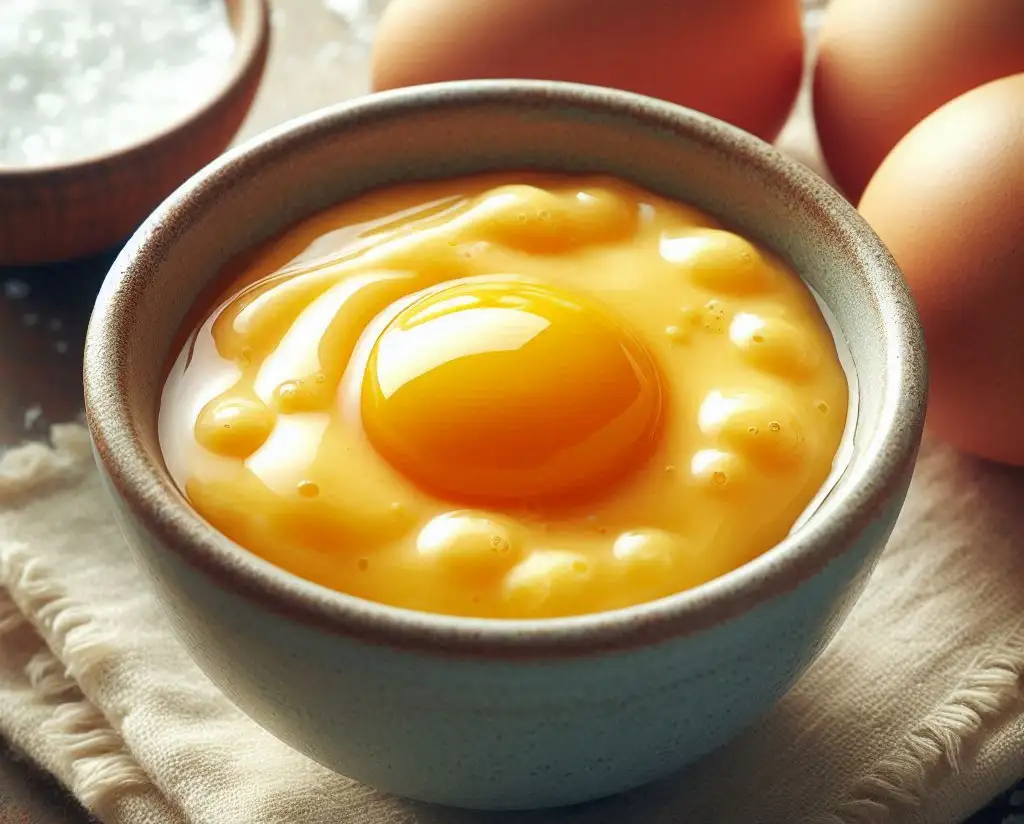
Step 1: Crack the Eggs
- Crack the desired number of eggs into a bowl, depending on the recipe and the amount of food being fried.
- Use fresh eggs for the best flavor and texture.
Step 2: Add the Liquid
- Add the chosen liquid (water, milk, cream, or buttermilk) to the bowl with the eggs.
- Start with a small amount of liquid (about 1 tablespoon per egg) and adjust to achieve the desired consistency.
- Use a whisk or fork to gently mix the eggs and liquid together.
Step 3: Whisk Until Smooth
- Whisk the egg mixture until it’s smooth, creamy, and free of lumps.
- Be gentle to avoid incorporating too much air, which can lead to a dense or tough coating.
- Stop whisking once the mixture is smooth and even.
Step 4: Add Flavorings (Optional)
- Add a pinch of salt to enhance the flavor and texture of the egg wash.
- Mix in any desired flavorings, such as garlic, herbs, spices, or lemon juice.
- Use a light hand when adding flavorings, as they can quickly overpower the flavor of the food.
Step 5: Check the Consistency
- Check the consistency of the egg wash by lifting some of the mixture with a whisk or fork.
- The ideal consistency is thick enough to coat the food evenly, but still flow easily off the whisk or fork.
- Adjust the consistency by adding more liquid or eggs as needed.
Tips for the Perfect Egg Wash:
- Use room temperature eggs for easier whisking and a smoother mixture.
- Don’t over-whisk, as this can incorporate too much air and lead to a dense coating.
- Don’t over-thin the egg wash, as this can make it difficult to achieve a crispy coating.
- Experiment with ratios to find the perfect balance of eggs and liquid for your desired texture and flavor.
Common Mistakes to Avoid:
- Over-whisking, which can lead to a dense or tough coating.
- Insufficient whisking, which can result in a lumpy or uneven coating.
- Incorrect consistency, which can affect the texture and crispiness of the fried food.
The Importance of Temperature Control When Making an Egg Wash
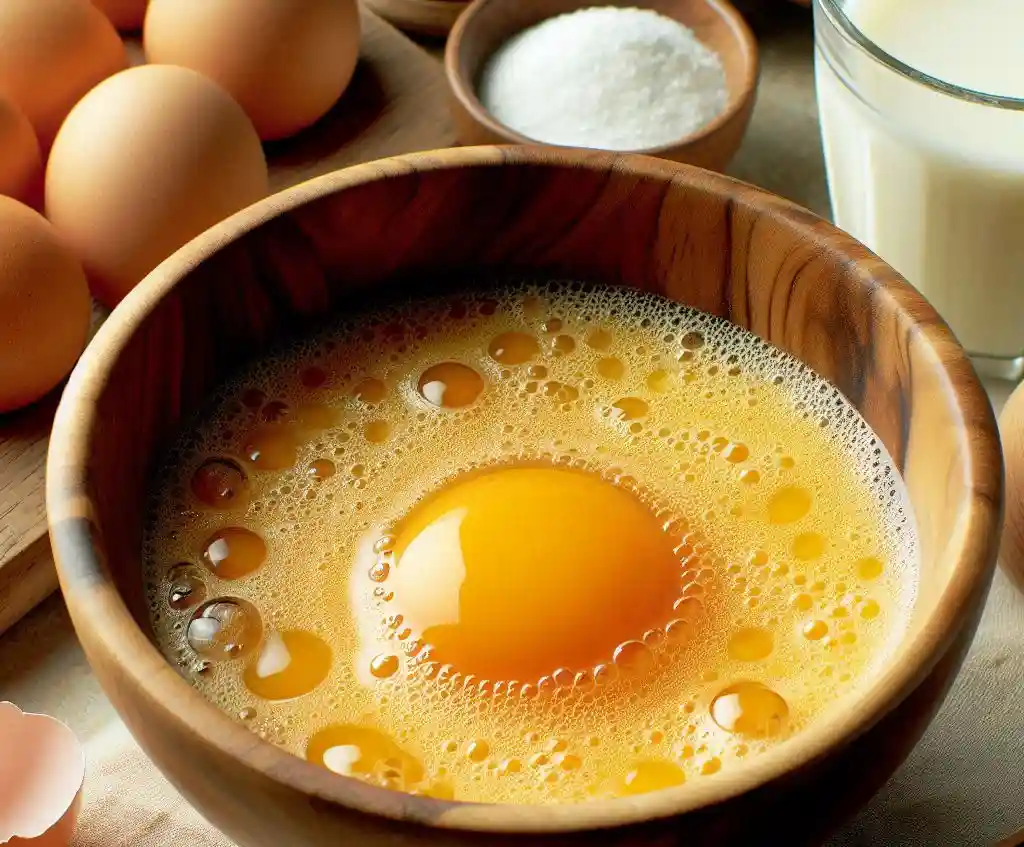
Why Temperature Control Matters:
- Egg protein denaturation: Eggs contain proteins that can denature (unfold) when exposed to heat, affecting the texture and structure of the egg wash.
- Emulsion stability: Temperature affects the stability of the emulsion between the eggs and liquid, which can impact the overall consistency and performance of the egg wash.
- Microbial growth: Temperature can influence the growth of microorganisms in the egg wash, which can affect food safety and quality.
Ideal Temperature Range:
- Room temperature (20°C to 25°C or 68°F to 77°F): This is the ideal temperature range for making an egg wash, as it allows for easy whisking and mixing without compromising the eggs’ protein structure.
- Refrigerated temperature (4°C to 10°C or 39°F to 50°F): If you need to store the egg wash for later use, refrigeration can help slow down microbial growth and preserve the emulsion.
Temperature Control Tips:
- Use room temperature eggs: Remove eggs from the refrigerator about 30 minutes before using them to allow them to reach room temperature.
- Avoid overheating: Don’t leave the egg wash at room temperature for extended periods, as this can cause the eggs to denature and the emulsion to break.
- Keep it cool: If you need to store the egg wash, refrigerate it at a temperature between 4°C to 10°C (39°F to 50°F) to slow down microbial growth.
- Monitor temperature: Use a thermometer to ensure the egg wash is within the ideal temperature range.
Consequences of Poor Temperature Control:
- Denatured eggs: Overheating can cause the eggs to denature, leading to a tough, rubbery, or scrambled texture in the finished product.
- Emulsion breakdown: Temperature fluctuations can cause the emulsion to break, resulting in a separated or curdled egg wash.
- Microbial growth: Inadequate temperature control can lead to microbial growth, compromising food safety and quality.
Best Practices for Temperature Control:
- Use a thermometer: Monitor the temperature of the egg wash to ensure it’s within the ideal range.
- Work in a cool environment: Prepare the egg wash in a cool, well-ventilated area to prevent overheating.
- Store properly: Refrigerate the egg wash at the correct temperature to slow down microbial growth and preserve the emulsion.
Tips for Whisking the Egg Wash to the Right Consistency

Whisking Techniques:
- Gentle Whisking: Use a gentle whisking motion to avoid incorporating too much air into the egg wash. This helps prevent a dense or tough coating.
- Figure-Eight Pattern: Whisk the egg wash in a figure-eight pattern to ensure all ingredients are well combined and the mixture is smooth.
- Scrape Down the Bowl: Stop whisking occasionally to scrape down the sides and bottom of the bowl, ensuring all ingredients are well incorporated.
Whisking Speed:
- Start Slow: Begin whisking at a slow speed to prevent splashing and incorporating air into the mixture.
- Increase Speed: Gradually increase whisking speed as the mixture thickens and becomes more stable.
Whisking Time:
- Initial Whisking: Whisk the egg wash for about 30 seconds to 1 minute to combine the ingredients and break down the eggs.
- Additional Whisking: Continue whisking for another 30 seconds to 1 minute, or until the desired consistency is reached.
Consistency Checks:
- Viscosity: Check the viscosity of the egg wash by lifting some of the mixture with a whisk or fork. The ideal consistency is thick enough to coat the food evenly but still flows easily off the whisk or fork.
- Flow Test: Perform a flow test by drizzling a small amount of the egg wash onto a surface. The mixture should flow smoothly and evenly, without forming droplets or beads.
Common Mistakes to Avoid:
- Over-Whisking: Avoid over-whisking, which can incorporate too much air and lead to a dense or tough coating.
- Under-Whisking: Don’t under-whisk, as this can result in a lumpy or uneven coating.
- Inconsistent Whisking: Whisk the egg wash consistently to ensure all ingredients are well combined and the mixture is smooth.
Tips for Achieving the Right Consistency:
- Add Liquid Gradually: Add the liquid (water, milk, or cream) gradually to the eggs, whisking continuously to achieve the desired consistency.
- Adjust Whisking Speed: Adjust the whisking speed and technique based on the consistency of the egg wash.
- Check Consistency Frequently: Regularly check the consistency of the egg wash and adjust the whisking technique as needed.
How to Store Your Homemade Egg Wash for Future Use
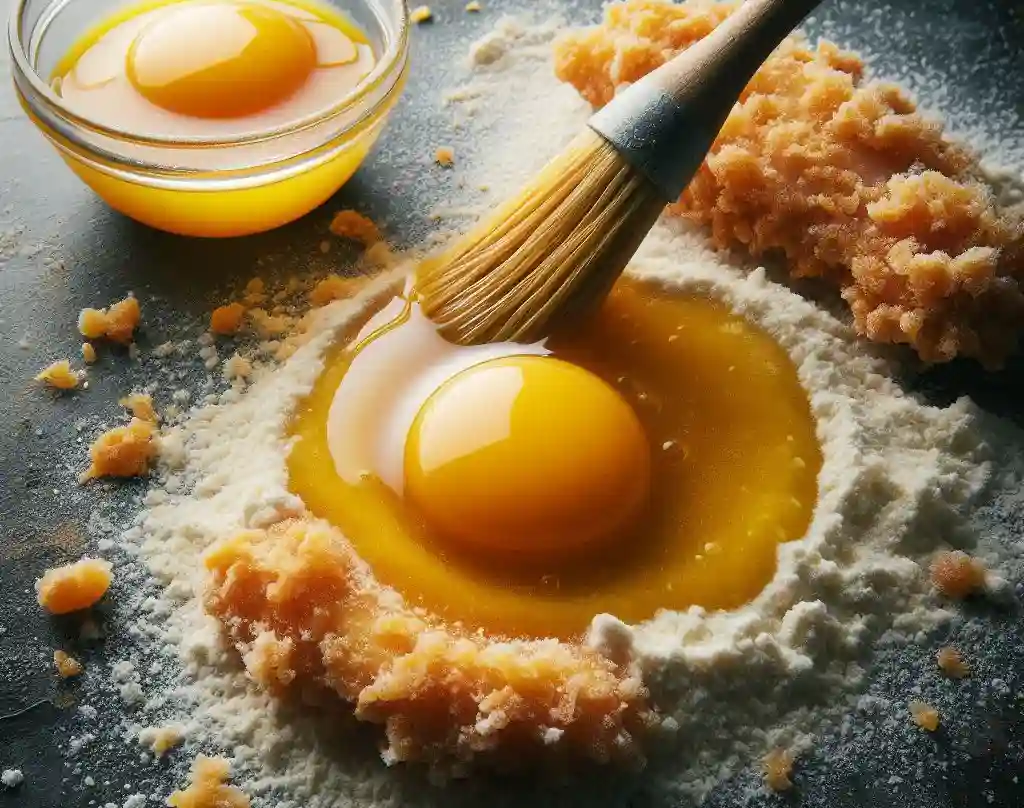
Refrigeration:
- Store the egg wash in an airtight container in the refrigerator at 4°C to 10°C (39°F to 50°F).
- Use within 3 to 5 days for optimal freshness and quality.
Freezing:
- Pour the egg wash into an airtight container or freezer bag, making sure to remove as much air as possible.
- Label and date the container or bag, and store in the freezer at -18°C (0°F) or below.
- Frozen egg wash can be stored for up to 3 months. When ready to use, thaw overnight in the refrigerator or at room temperature for a few hours.
Thawing and Re-Whisking:
- When thawing frozen egg wash, whisk it gently to re-emulsify the mixture.
- If the egg wash has separated during storage, whisk it gently to recombine the ingredients.
Common Mistakes to Avoid When Making an Egg Wash for Frying
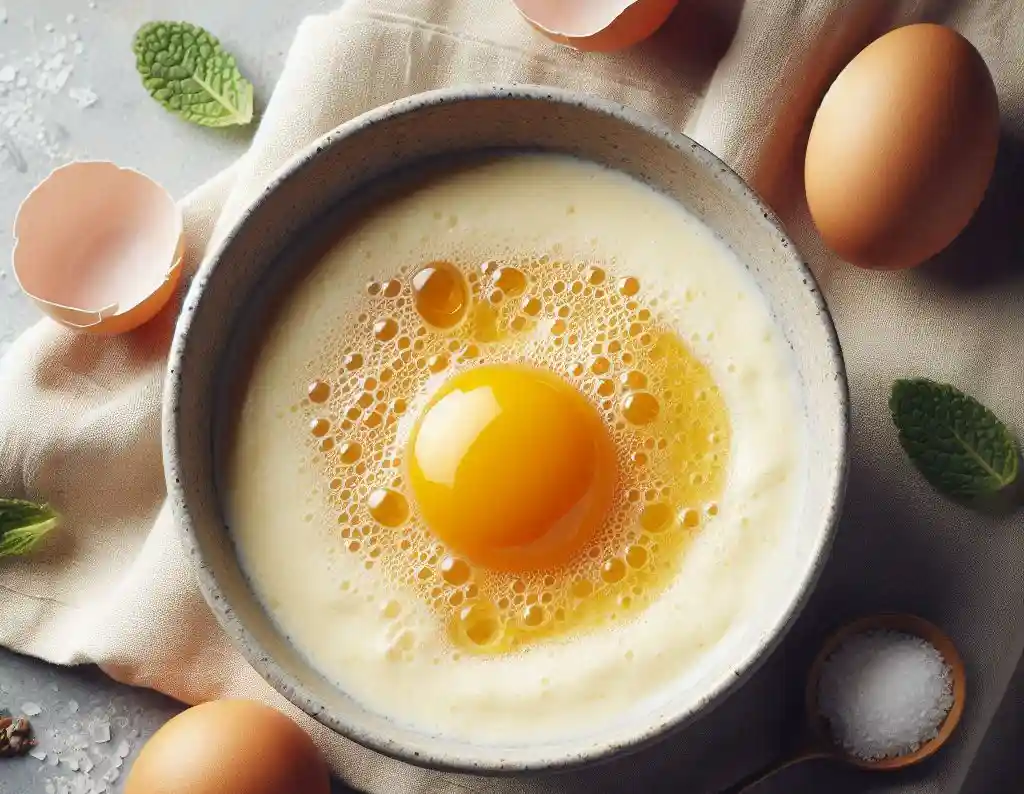
- Over-Whisking: Avoid over-whisking the egg wash, as it can incorporate too much air and lead to a dense or tough coating.
- Insufficient Whisking: Don’t under-whisk the egg wash, as it can result in a lumpy or uneven coating.
- Incorrect Ratio: Avoid using the wrong ratio of eggs to liquid, as it can affect the consistency and performance of the egg wash.
- Poor Temperature Control: Don’t leave the egg wash at room temperature for too long, as it can cause the eggs to denature and the emulsion to break.
- Inadequate Straining: Make sure to strain the egg wash to remove any lumps or sediment that can affect the coating’s texture and appearance.
- Old or Low-Quality Eggs: Use fresh, high-quality eggs to ensure the best flavor and texture in your egg wash.
Putting it All Together: How to Use Your Egg Wash for Delicious Fried Dishes
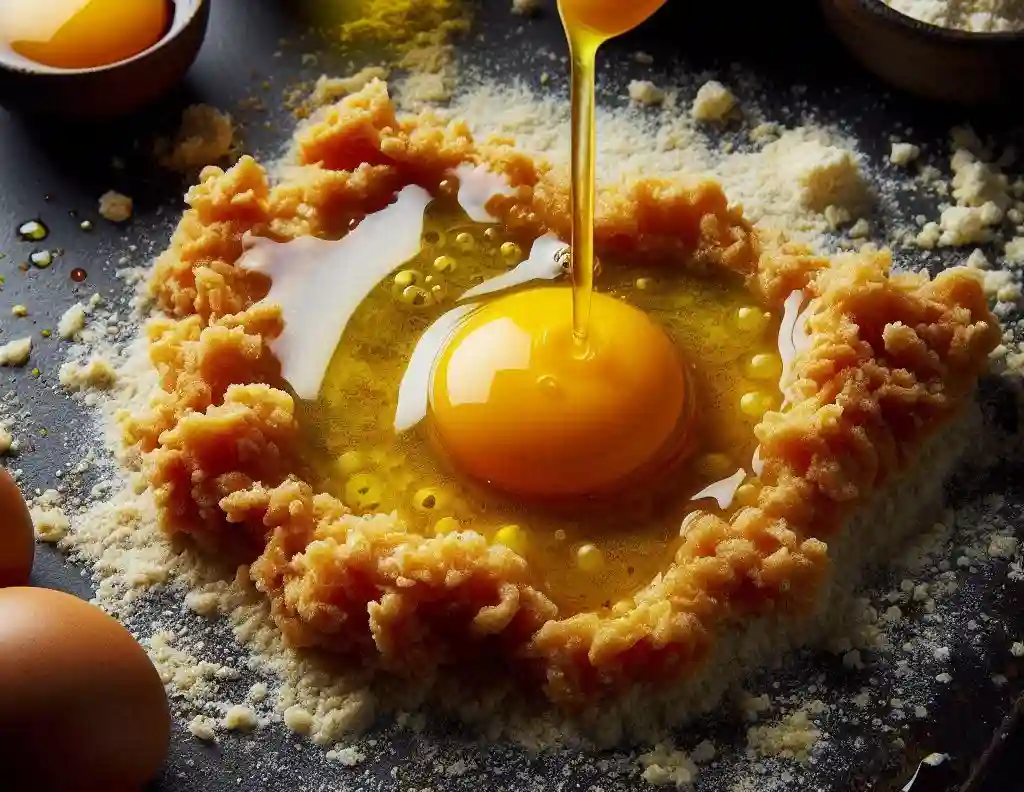
- Step 1: Prepare your ingredients, such as chicken, fish, or vegetables, by cutting them into desired shapes and sizes.
- Step 2: Dip each piece of food into the egg wash, making sure it’s fully coated.
- Step 3: Roll the egg-washed food in a breading mixture, such as flour, breadcrumbs, or panko, to create a crispy exterior.
- Step 4: Fry the breaded food in hot oil until golden brown and crispy.
- Step 5: Drain excess oil and serve hot with your favorite dipping sauce.
Tips and Variations:
- Experiment with different breading mixtures and seasonings to create unique flavor profiles.
- Try using different types of oil, such as peanut or avocado oil, for distinct flavors.
- For a lighter coating, use a lighter breading mixture or try using panko breadcrumbs.
FAQs
Q: What is an egg wash, and why do I need it for frying?
A: An egg wash is a mixture of eggs, water, and sometimes other ingredients that helps to create a delicate, even crust on fried foods. It’s essential for achieving a crispy exterior and a tender interior in fried dishes.
Q: Can I use store-bought egg wash instead of making my own?
A: While store-bought egg wash is available, making your own allows you to customize the flavor and texture to suit your favorite fried dishes. Plus, it’s easy and cost-effective to make your own!
Q: What’s the best ratio of eggs to water for an egg wash?
A: A good starting point is to use 1 egg to 1 tablespoon of water, but you can adjust the ratio to achieve the desired consistency for your specific frying needs.
Q: Can I add flavorings to my egg wash, and if so, what are some good options?
A: Yes, you can add flavorings to your egg wash! Some popular options include dried herbs, grated cheese, minced garlic, and paprika. Experiment with different combinations to find your favorite flavors.
Q: How long can I store my homemade egg wash in the fridge?
A: You can store your homemade egg wash in an airtight container in the fridge for up to 3 days. Give it a good whisk before using, and make sure to label the container with the date you made it.
Q: Can I use an egg wash for baking or grilling, too?
A: While an egg wash is specifically designed for frying, you can also use it as a topping for baked or grilled foods to add flavor and moisture. Just be sure to adjust the amount and consistency of the egg wash according to your cooking method.

Amelia Winthrop is the creative force behind Skillful Cooking, a blog that serves as a canvas for her culinary creations. With a philosophy that cooking should be accessible and enjoyable, Amelia crafts recipes that blend simplicity with sophistication. Her intuitive approach to the kitchen encourages others to embrace the joy of cooking and the pleasure of sharing meals with loved ones.

